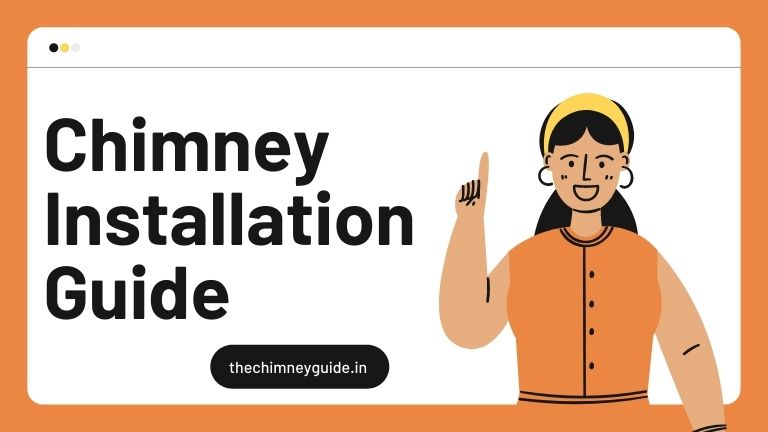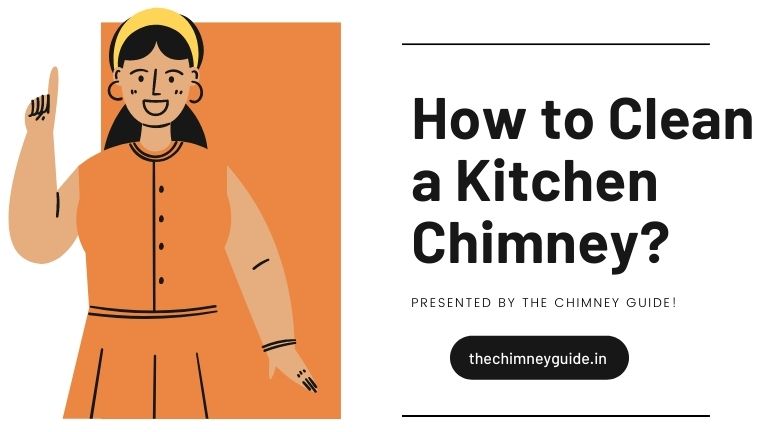Have you recently purchased a kitchen chimney for home or are you going to get one? Before you buy one, make sure to go through our guide on the best kitchen chimney in India.
Well, the first thing you got to do after getting one is to install it. But installing a kitchen chimney properly is a lot more complicated process than you can think.
Honestly, technicians charge a lot of money to install the chimney. But what if you can do that yourself? That will save you a few bucks, right?
That’s why here we present you with our detailed step-by-step kitchen chimney installation guide so you won’t have to search for how to install a kitchen chimney again.
But before that, have you got a chimney at home? Or still researching for the best one? Well, all your queries end here, just check out this guide on best auto-clean chimney in India.
Kitchen Chimney Installation Guide
The first and foremost thing you need to do is to get prepared for the chimney installation process. You must have all the tools required to install the chimney properly.

This is important so you don’t hassle later while hanging on with the chimney and looking for a hammer to pin that nail in the wall. Here are the important tools that you’ll need:
Tools You Need
- Measuring Tape
- Marker/Pen
- Plier
- Hammer
- Scissor
- Screw Driver
Along with all these things, you must have the box tools provided by the brand themselves. Also, you need the installation manual guide provided by the company, it will make things much easier.
Chimney Installation
With all the above-mentioned tools & kit in hand, you are all set to start the chimney installation. To install the chimney properly, firstly you need to do the measurements to decide the placement of the chimney.
Placement
You need to make sure that the chimney is installed exactly above the stove furnace to get the best out of your appliance. That will ensure that the chimney sucks in all the fumes directly being generated from the utensil kept above the furnace.
You can use the measurement tape to measure your gas stove and furnace and match it to the above area where you want to install the chimney. Both should be in parallel faced towards each other.
Distance Measurement
Once you have all your placement defined, you need to ensure you keep enough distance between the chimney and the stove. Check your chimney installation guide manual if there’s a defined value for it.
In general, the distance between the chimney and stove should be at least 1 meter. Keep your chimney at least 1 meter above the stove so it doesn’t get damaged with the heat and at the same time works efficiently to suck the smoke & fumes.
Attach the Screws
It’s now time to get ready and warm up. I mean, it’s now time to attach the screws. Look at your installation manual for some hints to help you out.
Generally, some chimneys come with just 3 screws while other with 4 built-in screw mechanism. Depending upon yours, just attach the screws and get ready to fix your chimney on the wall.
Drill the Holes
After you’re done fixing the screws. It’s now finally time to drill the holes in the wall where you need to attach your chimney. For this, take out your marker/pen again to take the measurements again.
With the help of measurement tape, measure the chimney hole’s distance to match it with the placement of the chimney on the wall. Mark all the points where you need to fix the screws.
It’s now time to drill the wall so you can fix the screws in there. If you are not a professional, we recommend doing so by being very careful. Drill machines are very powerful so go slow and steadily to drill the marked holes.
Install the Chimney
After you’re done marking and drilling the holes, you just need to attach your chimney to the wall and fix the screws through the chimney holes tightly to the wall holes.
Make sure the chimney is fit properly and no screws are leftover to be driven. All the screws must be fixed tightly to ensure your future safety. Also, check and map the measurements you took earlier if the chimney is properly aligned above the stove furnace or not.
Tips for Ducted-Chimneys
In case you have opted for ducted chimneys. You must take care of a couple of things. Most of the time, the duct you get free inside the box with the ducted chimneys are made up of very poor built quality.
They are just PVC pipes that can easily get melt just after a few months of usage. To avoid hassles later, we recommend buying a stainless steel duct pipe or an aluminum one.
This may add up some cost to your budget but overall, it’s a good investment as you won’t have to spend money later to remove the PVC duct and replace it with a new one.
Also, to avoid leakage problems make sure you don’t have so many bends throughout the duct pipe journey. The pipe length from the kitchen to the exhaust should not exceed 12 feet. If you take care of these things, you are good to use your chimney without any problem for years to come.
At the end chimney installation process also depends upon which type of chimney you’ve opted for, Baffle Filter or a Filterless chimney? From installation cost to maintenance, both have their own advantages & disadvantages. Here’s our guide on baffle filter vs filterless chimney so you know which one should you choose.
Conclusion
Kitchen chimneys might cost you some money but they are really useful and must-have kitchen equipment. You can’t call your kitchen a modern kitchen if it lacks a modern kitchen chimney.
These days, ductless chimneys are becoming very popular as they don’t even need a ducting route and are very easy to install. As easy, as you read it in this guide, yes you can easily install a ductless chimney yourself at home.
If you live on rent, it’s better to get a ductless chimney. But ductless chimneys have their own benefits as well. They are much more efficient at work compared to ducted ones. If you’re interested, here’s the difference between ducted and ductless chimneys.
This was our kitchen chimney installation guide. I hope you now know how to install a kitchen chimney properly at home. If you have any queries left, please let us know. For more updates, subscribe to The Chimney Guide!


